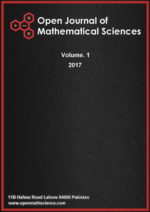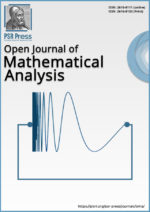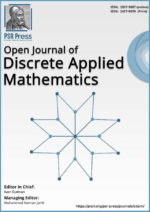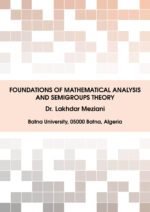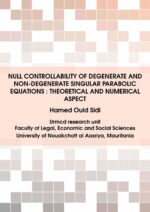Ptolemy Scientific Research Press (PSR Press)is a highly regarded publisher of scientific literature dedicated to bringing the latest research and findings to a broader audience. With a focus on cutting-edge research and technology, Ptolemy Scientific Research Press offers a range of publications catering to professionals, researchers, and student’s needs. Whether looking for information on the latest breakthroughs in physics, biology, engineering, or computer science, you can trust Ptolemy Scientific Research Press to deliver insightful, accurate, and engaging content. With its commitment to quality, accessibility, and innovation, Ptolemy Scientific Research Press is an essential resource for anyone interested in science and technology.

Latest Published Articles
OMS-Vol. 4 (2020), Issue 1, pp. 343 – 355 Open Access Full-Text PDF
Temur Z. Kalanov
Abstract: The critical analysis of the foundations of vector calculus and classical electrodynamics is proposed. Methodological basis of the analysis is the unity of formal logic and rational dialectics. The main results are the following statements: (1) a vector is a property of the motion and of the interaction of material objects, i.e., the concept of a vector is the concept of a physical property. Therefore, the concept of a vector is a general and abstract concept; (2) a vector is depicted in the form of an arrow (i.e., “straight-line segment with arrowhead”) in a real (material) coordinate system. A vector drawn (depicted) in a coordinate system does not have the measure “meter”. Therefore, a vector is a pseudo-geometric figure in a coordinate system. A vector is an imaginary (fictitious) geometric figure; (3) geometrical constructions containing vectors (as pseudo-geometric figures) and vector operations in a coordinate system are fictitious actions; (4) the scalar and vector products of vectors represent absurd because vectors (as abstract concepts, as fictional geometric figures that have different measures) cannot intersect at the material point of the coordinate system; (5) the concepts of gradient, divergence, and rotor as the basic concepts of vector analysis are a consequence of the main mathematical error in the foundations of differential and integral calculus. This error is that the definition of the derivative function contains the inadmissible operation: the division by zero; (6) Maxwell’s equations the main content of classical electrodynamics are based on vector calculus. This is the first blunder in the foundations of electrodynamics. The second blunder is the methodological errors because Maxwell’s equations contradict to the following points: (a) the dialectical definition of the concept of measure; (b) the formal-logical law of identity and the law of lack of contradiction. The logical contradiction is that the left and right sides of the equations do not have identical measures (i.e., the sides do not have identical qualitative determinacy). Thus, vector calculus and classical electrodynamics represent false theories.
OMS-Vol. 4 (2020), Issue 1, pp. 337 – 342 Open Access Full-Text PDF
S. Mehrshad
Abstract: In this paper, we study some properties of induced topology by a uniform space generated by a family of ideals of a BCC-algebra. Also, by using Cauchy nets we construct a uniform space which is completion of this space.
EASL-Vol. 3 (2020), Issue 3, pp. 30 – 36 Open Access Full-Text PDF
Y. Gayathri Narayana, V. Yegnanarayanan
Abstract: Prime numbers and their variations are extremely useful in applied research areas such as cryptography, feedback and control in engineering. In this paper we discuss about prime numbers, perfect numbers, even perfect and odd perfect numbers, amicable numbers, semiprimes, mersenne prime numbers, triangular numbers, distribution of primes, relation between \(\pi\) and prime numbers. In the process we also obtain interesting properties of some of them and raise a set of open problems for further exploration.
EASL-Vol. 3 (2020), Issue 3, pp. 20 – 29 Open Access Full-Text PDF
Lelise Mulatu, Alemayehu Shiferaw, Solomon Gebregiorgis
Abstract: In this paper, a block linear multistep method (LMM) with step number 4 \((k = 4)\) through collocation and interpolation techniques using probabilists Hermite polynomial as basis function which produces a family of block scheme with maximum order five has been proposed for the numerical solution of stiff problems in ODEs. The method is found to be consistent, convergent, and zero stable.The accuracy of the method is tested with two stiff first order initial value problems. The results are compared with fourth order Runge Kutta (RK4) method and a block LMM developed by Berhan et al. [1]. All numerical examples are solved with the aid of MATLAB software after the schemes are developed using MAPLE software.
ODAM-Vol. 3 (2020), Issue 3, pp. 4 – 13 Open Access Full-Text PDF
Fidel Oduol
Abstract: Fibonacci polynomials have been generalized mainly by two ways: by maintaining the recurrence relation and varying the initial conditions and by varying the recurrence relation and maintaining the initial conditions. In this paper, both the recurrence relation and initial conditions of generalized Fibonacci polynomials are varied and defined by recurrence relation as \(R_n(x)=axR_{n-1}(x)+bR_{n-2}(x)\) for all \(n\geq2,\) with initial conditions \(R_0(x)=2p\) and \(R_1(x)=px+q\) where \(a\) and \(b\) are positive integers and \(p\) and \(q\) are non-negative integers. Further some fundamental properties of these generalized polynomials such as explicit sum formula, sum of first \(n\) terms, sum of first \(n\) terms with (odd or even) indices and generalized identity are derived by Binet’s formula and generating function only.
ODAM-Vol. 3 (2020), Issue 3, pp. 1 – 3 Open Access Full-Text PDF
Johan Kok
Abstract: The degree tolerant number of the power graph of the finite Albenian group, \(\mathbb{Z}_n\) under addition modulo \(n\), \(n\in \mathbb{N}\) is investigated. A surprising simple result, \(\chi_{dt}(\mathcal{P}((\mathbb{Z}_{n},+_{n}))) = k\) for the product of primes, \(n=p_1p_2p_3\cdots p_k\) is presented.

